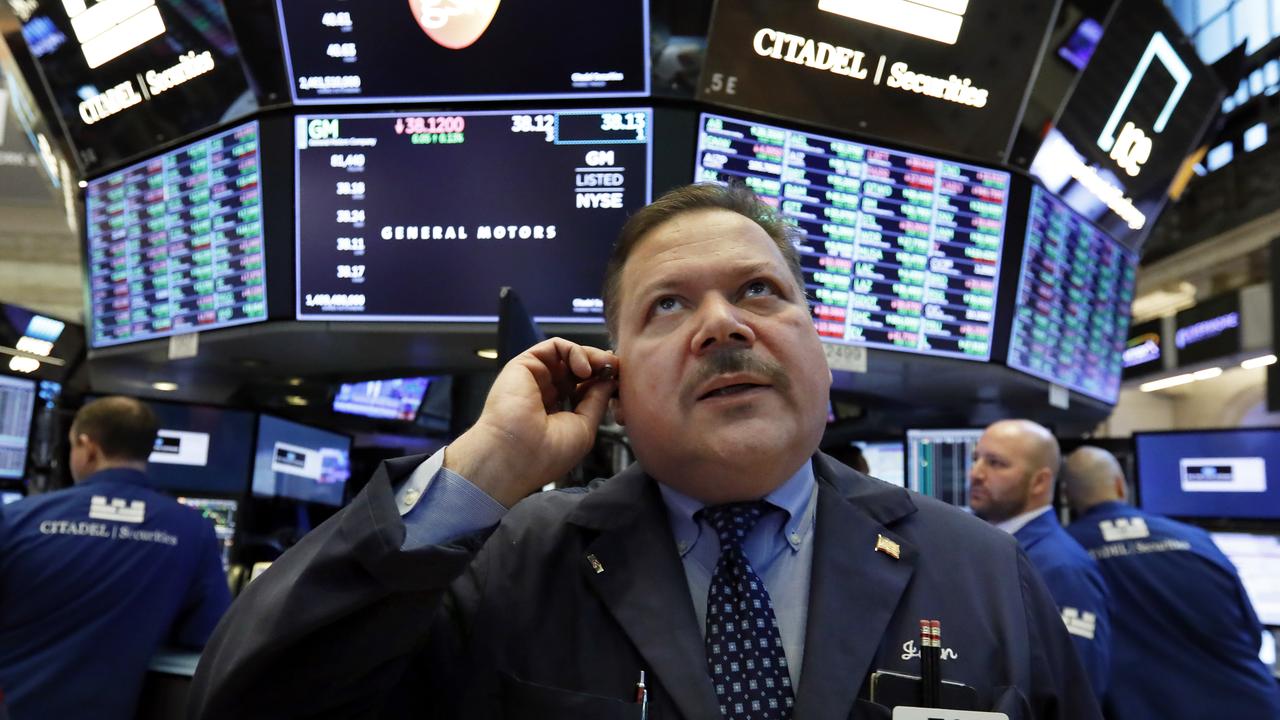Equities lose investor appeal as bond yields rise
The local sharemarket is having a bad month, with the share index heading for its second-worst performance this year.

Despite stronger commodity prices and favourable seasonal factors, the share index is heading for its second-worst month this year, with the benchmark S&P/ASX 200 index down 2.8 per cent.
The unusual sell-off in shares comes as yields on government bonds jump amid expectations of a US interest rate hike in December and a reduced appetite for further policy stimulus globally. Rising bond yields are reducing the appeal of equities, which have benefited from record-low interest rates in the wake of the global financial crisis.
October is normally a strong month for shares, as investors in the northern hemisphere become active again after their summer holiday period, which typically ends with a selling climax in August and September.
While September was a little stronger than normal thanks to a strong mid-month recovery, August was certainly weak, with a 2.3 per cent fall that month.
Strong gains in commodity prices have underpinned the resources sector this month. BHP Billiton is up 2.7 per cent, Rio Tinto is up 4.2 per cent and Fortescue Metals is up 11 per cent despite “sell” recommendations from Citi analysts who don’t believe the commodity price strength is sustainable.
Whereas analysts have been expecting commodity prices to fall back, iron ore is up 13 per cent, coking coal is up 18 per cent and crude oil is up 3 per cent so far this month.
Financials have also outperformed, with the S&P/ASX 200 banks sector up 1.1 per cent, although it’s normally much stronger this month as the market anticipates dividend payments from the banks.
But the “expensive defensives” or “bond proxies” have been punished by the rise in bond yields.
Real estate is down 8 per cent, telecommunications and utilities are down about 5 per cent and infrastructure stocks like Transurban and Sydney Airport are down at least 10 per cent. The other market darling of the past five years — healthcare — is down 9 per cent this month, making it the worst-performing sector, although the fall was magnified by the profit warning in Healthscope.
Certainly one of the biggest concerns for equities in the next year or two should be the potential for a rise in bond yields as central banks are now showing less appetite for stimulus due to the negative “unintended consequences” of excessively low interest rates.
If a rise in bond yields coincides with stronger economic growth and inflation, it could be good for cyclical stocks. However, the market has recently been focusing on the negative implications of higher bond yields for “bond-like” equities, and cyclicals haven’t been able to take up the slack.
The short-term outlook for the bond market is fluid. German 10-year bund yields surged to a five-month high of 0.19 on Thursday, pushing US 10-year Treasury yields up to a five-month high of 1.87 per cent. That saw Australia’s Commonwealth Government 10-year bond yield hit a six-month high of 2.39 per cent. It closed at 2.38, above a long-term downtrend line at 2.33 per cent.
But investors on Friday appeared to be betting that the “bondcano” will calm down, at least for the short term. After hitting a five-week low of 5261.5 points, the S&P/ASX 200 bounced off the low to close at 5283.8. That’s significant on a technical basis because it respected the 200-day moving average at 5256. Whether Friday’s late day bounce was just profit taking on short positions remains to be seen, but share trading volume was quite good for a Friday, suggesting decent buying was occurring.
Investors really need to see a retreat in bond yields from here, but on a price-to-earnings basis at least, the index should be supported near current levels. It has hit 14.5 times forecast earnings per share for the year ahead, the same point that held the share market dips in June and September.
And the dividend yield was up near the 4.7 per cent level it hit in June and September.
One thing that could help stabilise the bond market is the RBA meeting next week, particularly if it cuts rates or says that any decision to cut again will depend on economic data.
An interest rate cut is unlikely, simply because headline inflation data this month was stronger than expected and house price data for the September quarter looks strong. But market probabilities of interest rate cuts in the year ahead seem too low.
The market now sees only a 6 per cent chance of a cut next week and just a 35 per cent chance of a cut by next September. Citi economists are sticking to their call for a cut next week, based on the fact that core inflation hit a record low of 1.5 per cent in the September quarter.







The Australian sharemarket is having a bad month.